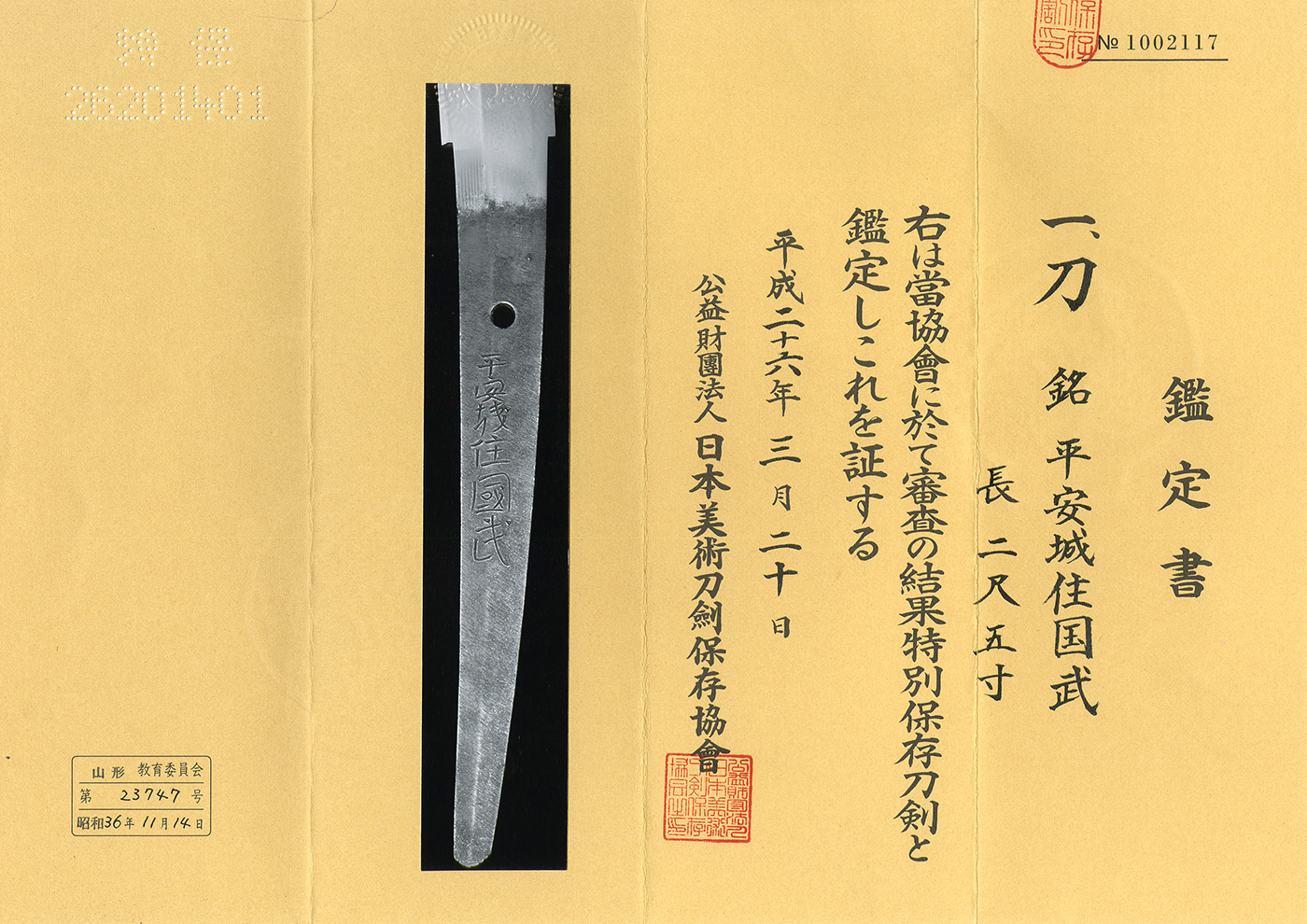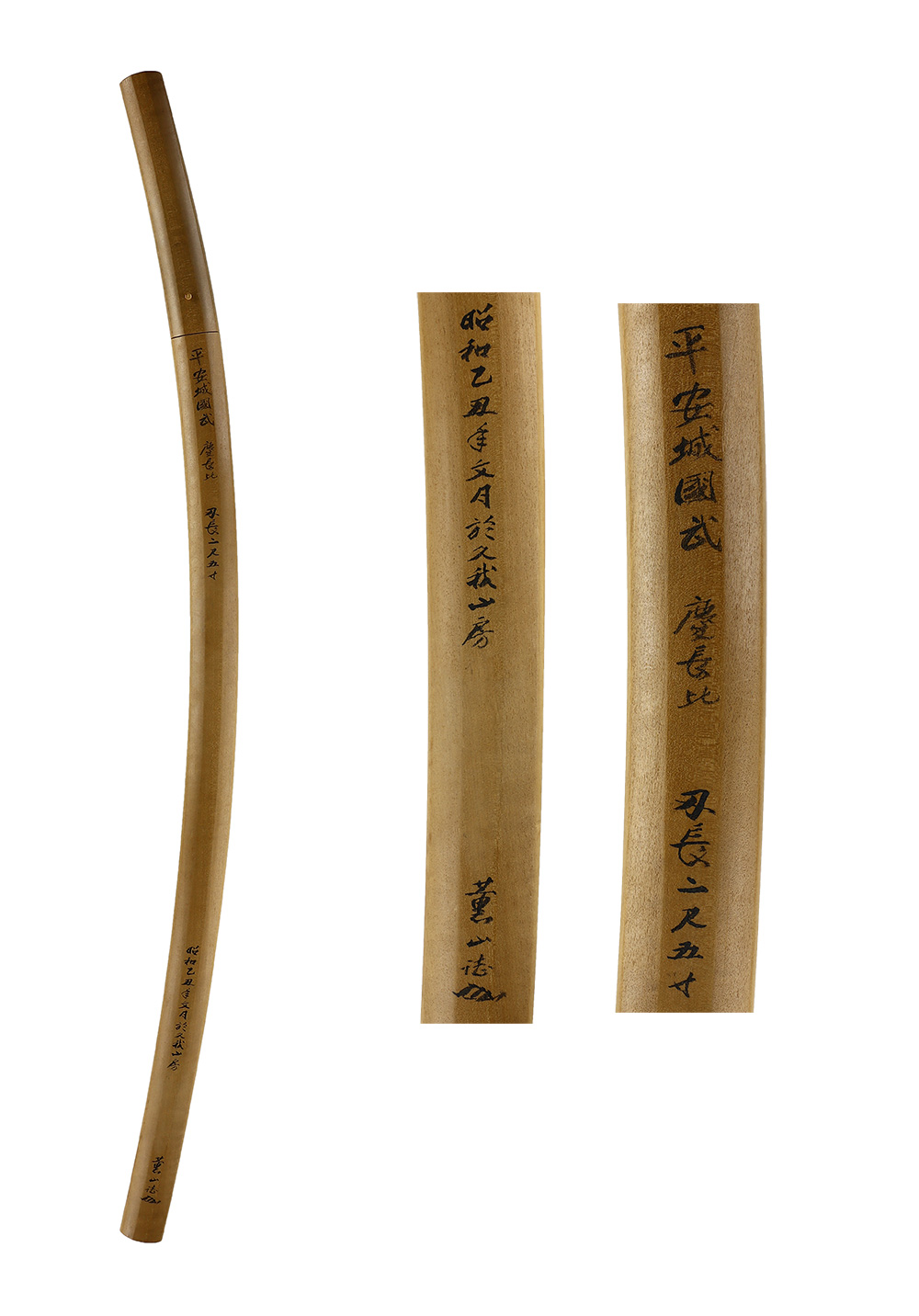Ordering number:AS24002
Katana in Shirasaya with Koshirae (NBTHK Tokubetsu Hozon Token)
Signature: HeianjyoJu Kunitake
平安城住国武
Sayagaki: Heianjyo Kunitake
Keicho Era, Blade Length 2 Shaku 5 Sun.
Written in July, Showa year by Koga Yamaboushi, poetry by Kunzan
Shinto: Saijyo Saku: Yamashiro
Our company divides the swords into four sections based on the swordsmith’s work: Saijyo Saku, Jyojyo Saku, Jyo Saku, and Regular Saku.
This work is ranked as Jyojyo Saku.
Polished
Habaki: Single silver
Blade Length: 75.8 cm (29.84 in)
Curvature: 3.1 cm (1.22 in)
Mekugi Hole: 1
Width at Base: 3.09 cm (1.22 in)
Width at the Tip: 2.14 cm (0.84 in)
Thickness of Rim: 0.71 cm (0.28 in)
Era: Edo period, around the Shoho era (1652)
Shape: The blade has a wide body, thick rim, and deep curvature with an elongated Kissaki. It’s a fine work of Keicho Shinto with a beautiful shape.
Jigane: The jigane has a well-tempered itame hada similar to Kunihira’s, with a rough texture.
Hamon: The hamon is a turbulent notare with nie, featuring sunagashi and kinsuji. The boshi is slightly long, drooping, and roundly burnt down.
Features: Horikawa Kunitake was a pupil of Horikawa Kunihiro, and the jigane resembles Kunihiro’s rough textured steel.
Aoi Art’s Comment: Heianjyo Kunitake was a disciple of Horikawa Kunihiro, learning his manufacturing methods, especially the rough-textured jigane that is characteristic of Kunihiro’s work.
This piece also has a sayagaki by Dr. Kunzan, indicating the era as around the Keicho period, with a beautiful shape having a deep curvature and slightly elongated Kissaki.
Koshirae:
Tsuba: Circular iron base surrounded by silver with carved designs of giants, people, and trees, and colored with gold.
Saya: Black lacquered scabbard
Fuchikashira: Red copper base with high relief dragon design, colored with gold.
Menuki: Large, high relief dragon, colored with gold.
Despite being from a later period, this is a well-made piece.
Historical Background: Towards the end of the Muromachi period transitioning into the Edo period around the Keicho era, swords were made with a solid construction known as “Keicho saturation”. Since Heianjyo Kunitakee assisted Kunihiro, it is believed he produced fewer works. However, the quality of his works is excellent, as evidenced by the sayagaki by Dr. Kunzan.
NBTHK Tokubetsu Hozon Token
AoiArt estimation paper
Whole Oshigata
Auction Starting Price:1,400,000JPY






